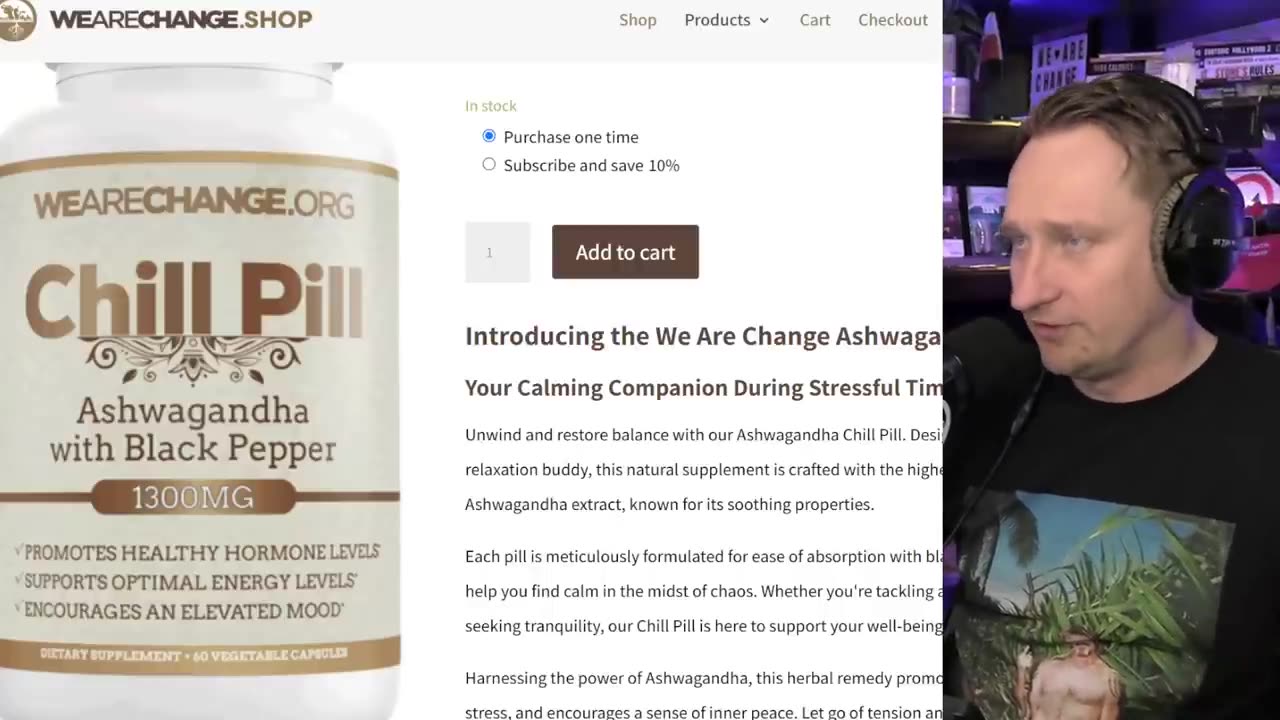Premium Only Content

White Males Can't Catch A Break!
Boost your testosterone naturally - https://takethechillpill.com/
Harry Sisson Scandal Shows Straight White Males Can't Catch A Break!
Highlights
📱 TikTok Scandal Impact: Harry Sisson, a TikTok star, finds himself in hot water with allegations of being hypocritical about women.
📰 Media and Propaganda: There’s a growing concern about the influence of media narratives on public perception, especially regarding violence and misogyny.
⚖️ Hypocrisy in Public Figures: The video highlights how public figures may fail to practice what they preach, particularly in the realm of gender relations.
😳 Cultural Backlash and Reaction: The reactions to Sisson’s behavior indicate a larger cultural conversation about male accountability and the responsibility of influencers.
🎬 U.K. Propaganda Film: The U.K. Parliament is considering making a controversial film mandatory that portrays young white males in a negative light, purportedly to combat misogyny.
🌍 Critical Evaluation: The commentary emphasizes the need for critical analysis of media and the narratives we consume, especially regarding identity and behavior.
✊ Men’s Advocacy: The discussion also touches on how narratives surrounding gender can marginalize men’s experiences, particularly those from specific backgrounds.
Key Insights
⚠️ Public Figures Under Scrutiny: Harry Sisson’s case exemplifies the heightened scrutiny public figures face in an age where digital communications leave a trail of evidence. His private messages, once thought to be securely communicated, have now become a point of public debate. The line between private and public discourse continues to blur, rendering many public figures vulnerable to cancellations and backlash for past indiscretions.
🎤 Cancel Culture as a Tool of Accountability: The uproar surrounding Sisson’s actions can be seen as part of a larger trend of societal accountability, particularly in terms of how men interact with women. While many call for consequences for such behavior under the idea of accountability, others argue that labeling women who engaged in consensual communication as victims undermines actual cases of misconduct. This dichotomy reveals the complexities and challenges in discussions of gender and consent.
📊 Intersection of Politics and Gender Narratives: The video suggests that Harry Sisson’s progressive political stance has made him a target for those who oppose his viewpoints, intertwining political identity with personal actions. The debate brings to light how the political affiliations of individuals can amplify personal controversies, leading to discussions that extend well beyond the initial issue.
💬 Public Discourse about Gender: The situations discussed reveal how public discourse on gender has evolved. There is an increasing expectation for men, especially those in the spotlight, to navigate complex gender dynamics carefully. The pushback against Sisson points to a larger societal shift towards expectations of transparency and integrity among public figures regarding their conduct towards women.
🌐 Global Perspectives on Masculinity: The commentary extends to a critique of global retellings of male figures in entertainment and media, suggesting that there is a persistent trend in which Western media often portrays white males, especially in relation to violence and extremism. This depiction runs the risk of oversimplifying the nuances of crime and male behavior by ignoring broader societal issues that contribute to these narratives.
🕵️ Cultural Context and Misplacement of Blame: The discussion underlines a profound dissonance between actual statistics surrounding crime and acts of violence attributed to different demographic groups. The video critiques government responses and media narratives that attribute blame predominantly to particular groups, inciting a conversation about the dangers of oversimplifying complex social issues.
🏛️ Call for Critical Media Consumption: Finally, the video encourages viewers to be critical consumers of media. As societal narratives become increasingly potent, it is crucial to analyze the content we consume critically. Viewers are urged to question the motivations behind certain portrayals and challenge assumptions based on stereotypes rather than factual evidence, suggesting a more nuanced understanding of social behavior and identity should be pursued.
-
 57:18
57:18
Dialogue works
1 day ago $0.23 earnedAndrei Martyanov: NATO is being demilitarized
110K20 -
 LIVE
LIVE
FyrBorne
12 hours ago🔴Warzone M&K Sniping: Sniping Challenges
261 watching -
 11:18
11:18
Dr Disrespect
1 day agoDr Disrespect: THE BEST AND WORST OF GAMESCOM 2025
84.8K13 -
 2:08:25
2:08:25
Side Scrollers Podcast
22 hours agoEXCLUSIVE: Marty O’Donnell BREAKS SILENCE On Bungie Drama + Kotaku Hypocrisy + MORE | Side Scrollers
31.7K5 -
 3:24:29
3:24:29
Wahzdee
4 hours agoBack on BF2042 – Which Sniper Is Actually Worth It?
3.07K1 -
 2:31:49
2:31:49
MattMorseTV
22 hours ago $0.72 earned🔴Trump's Oval Office BOMBSHELL.🔴
39.7K57 -
 25:14
25:14
GritsGG
17 hours agoRank 1 Player Spectates Casual Solos!
23.8K1 -
 LIVE
LIVE
Lofi Girl
2 years agoSynthwave Radio 🌌 - beats to chill/game to
501 watching -
 4:33:40
4:33:40
FreshandFit
12 hours agoAfter Hours w/ Girls
261K144 -
 2:33:36
2:33:36
Badlands Media
13 hours agoOnlyLands Ep. 21: From Trump’s VP Pick to Green Energy Grift
83.1K22